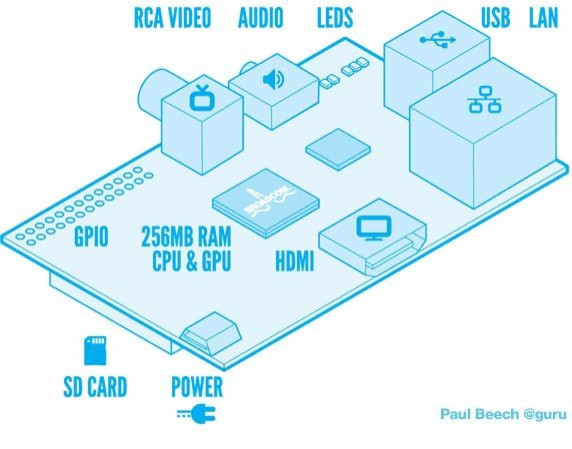Raspberry Pi: What You Need to Know (Features, Details and More)

Raspberry Pi's Linux-based Fedora operating system, which was developed primarily to encourage kids to code, looks potent enough to compete with Microsoft’s Windows 8 when it arrives. It is even powerful enough to handle everyday jobs which are done with word processing and spreadsheets.
Let’s take a look into its features and details.
Origin and Importance of Raspberry Pi – The Raspberry Pi was developed by the Raspberry Pi Foundation, an organization founded in 2009. The organization is supported by the University of Cambridge Computer Laboratory and tech firm Broadcomm, whose system-on-a-chip powers the device. Games developer and Raspberry Pi Foundation head, David Braben, told gaming magazine Edge that Raspberry Pi is quite a powerful and cheap device that anyone can carry around. That makes it appear less like a purely school thing.
The Pi aims at providing a deeper understanding of the thorough academic subject of computer science as there is a big difference between IT education and IT literacy.
Pi Operating System – The Raspberry Pi operating system is Linux, or Fedora, to be more precise. The OS supports programming languages including Python, BBC Basic, C and Perl. You can run Fedora if only you want to, although the PC architecture is based around version 6 of the ARM architecture, which may or may not be supported by some more recent distributions and may slightly limit the obtainable alternatives.
Pi Specifications – The Raspberry Pi processor is a 700MHz Broadcomm system on a chip with a Videocore 4 GPU. This provides OpenGL ES 2.0, hardware-accelerated OpenVG and 1080p HD video. There's also 256MB of on-board RAM and sockets for HDMI, USB 2.0, RCA video, USB 2.0 and 3.5mm audio jacks. The power comes via a MicroUSB connector.
The model B adds a second USB 2.0 port and a 10/100 BaseT Ethernet connection. Although there's no Wi-Fi in either version, you can easily hook up a USB Wi-Fi adapter. However, it doesn't come with a case, and there's no hard disk or SSD. It has been designed to use SD cards for booting and storage.
Pi Launch Date – The Raspberry Pi for the Model B has already been launch in UK. The device, at the moment, is only bought by interested individuals rather than educational institutes.
The official educational launch will take place later this year and the plan is to use existing customers as voluntary helpers so that when the Pi hits schools, its software will be in its prime, free of bugs, and easier for kids and educators alike.
Raspberry Pie and BBC Micro 2.0 – David Braben said in the interview: At the moment, on a normal machine you've got to know quite a lot to be able to boot Linux, fire up a compiler and get anything to compile. Just to say your own name on the screen is a challenge. Whereas on the BBC, you'd see in every shop that someone had typed, 'So-and-so is clever,' or 'So-and-so smells'. Line 20, Goto 10: that almost entered the vocabulary, it's so straightforward. It's understandable even to someone who hasn't done programming. It would be great if you could take that and wrap it in something where it's easy to create something - websites, for instance - very easily.
Raspberry Pi could also play a role in the developing countries, primarily because it’s simple and stronger than a normal laptop, and exceptionally cheap.
Pi Price – There are two versions of the Raspberry Pi hardware: the $25 Model A and the $35 model B. Although neither will make you spend in excess, you do need to provide your own keyboard and screen.
© Copyright IBTimes 2024. All rights reserved.





















